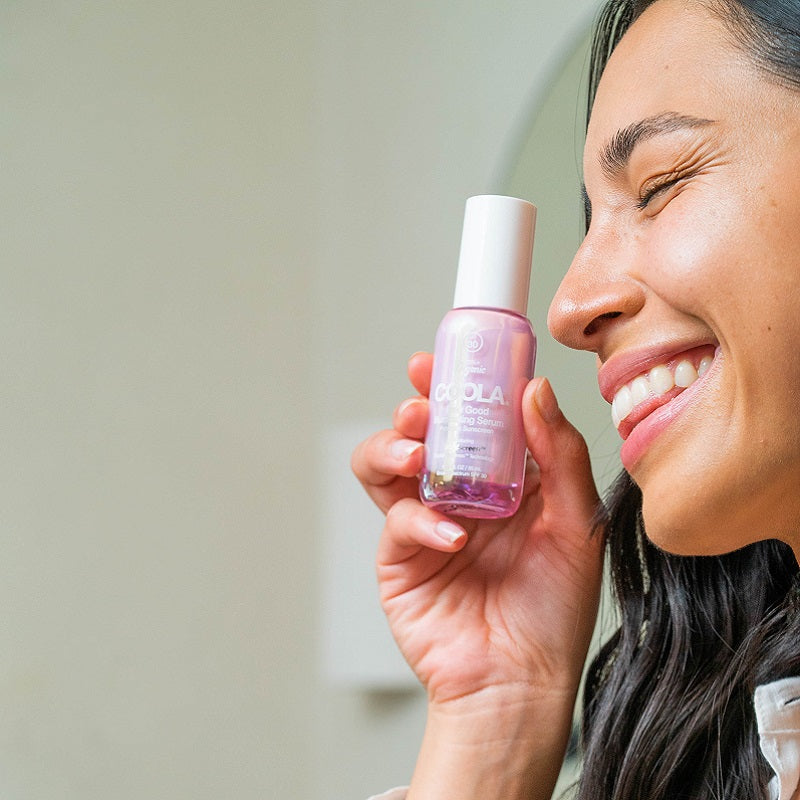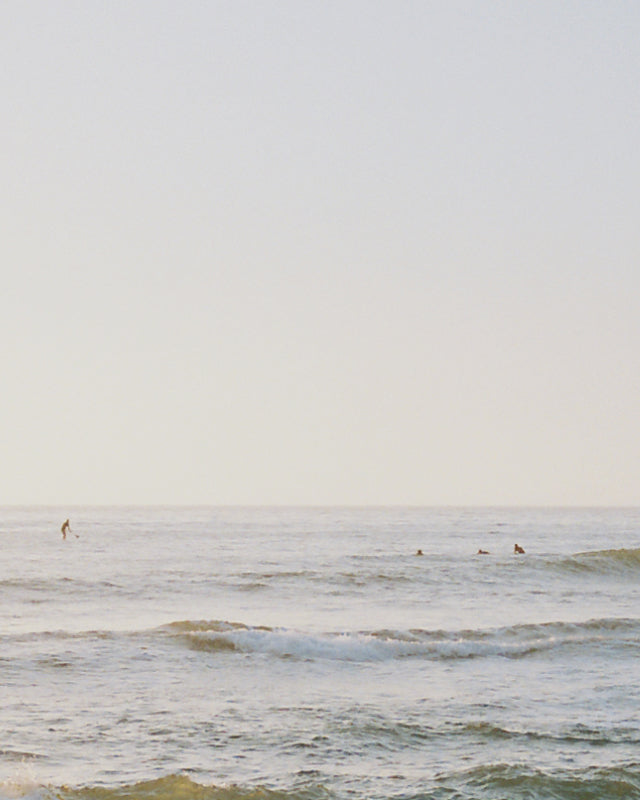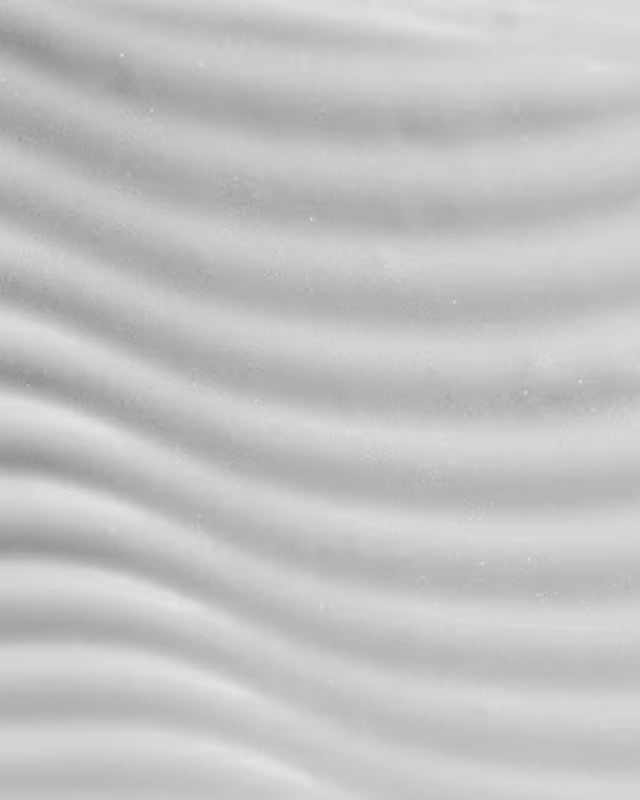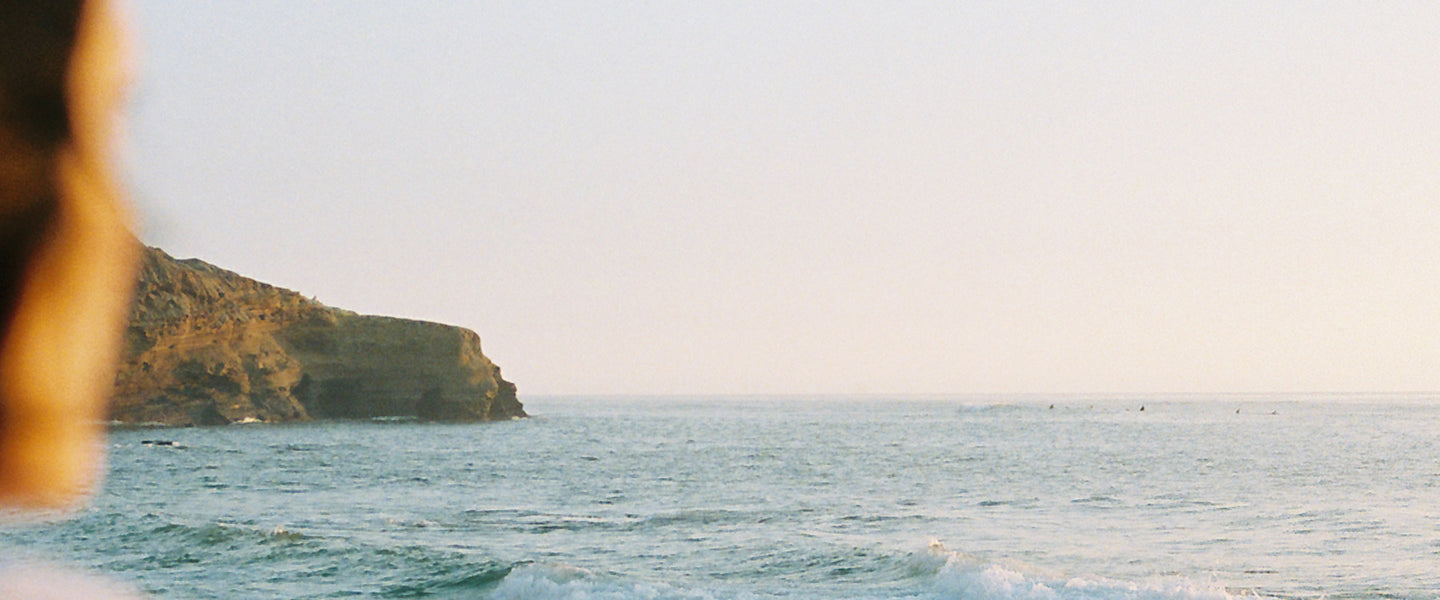
Sunscreen 101: How Long It Works and Exactly When to Reapply
Is once-a-day sunscreen really enough?
Many of us are unsure how long sunscreen actually lasts—or when to reapply it. What happens on those sunny days when you plan a quick walk but end up staying outside for hours?
The truth is, applying sunscreen in the morning is only the first step in protecting your skin from the sun’s harmful effects.
Here’s a simple sunscreen guide to end the confusion about sunscreen reapplication.
How Long Does Sunscreen Last on the Skin?
We all want sunscreen that lasts, but no SPF lasts forever. According to the Food and Drug Administration (FDA)1, sunscreen should be reapplied at least every two hours, more often if you’re swimming, sweating, or towel-drying. That’s because sunscreen breaks down in the sun and water. Sweat and skin oils have the same effect, and towels just remove your protection.
There’s a common myth that the higher the SPF, the longer you can go without reapplying sunscreen—but that’s not true. SPF, or sun protection factor2, measures how much UV radiation is needed to cause sunburn on protected skin. It’s calculated by comparing the time it takes for sunscreen-protected skin to burn versus unprotected skin. For example, wearing SPF 30 means it would take 30 times longer to burn than without any sunscreen at all. When applied properly, SPF 30 blocks about 97% of UVB rays.
In other words, the higher the SPF number, the more solar energy your skin can withstand without getting burned. Here’s an example: Early morning sun in Minnesota is nothing like midday sun in Cancun. Where is a higher SPF the best choice? If you’re thinking it’s Cancun, you’re right.
But even the highest SPF wears off over time.
The Science Behind Sunscreen Longevity
Knowing how sunlight damages skin helps us understand how sunscreen works. It also explains recommended sunscreen reapplication frequency.
UVA and UVB: What’s the Difference?
Sunlight contains two types of ultraviolet radiation that affect the skin: UVA (ultraviolet A radiation) and UVB (ultraviolet B radiation).
UVA penetrates deep and contributes to wrinkles and premature aging. UVB damages the outer layers of skin and is the primary cause of sunburn. Both types of radiation can cause cancer. However, most skin cancers are associated with UVB.
Broad-spectrum, chemical-based sunscreens help protect against both UVA and UVB radiation. They actually absorb UV rays3, which also makes them break down.
What Makes Sunscreen Break Down?
Even the best sunscreen formula loses effectiveness in real-life conditions. Here’s what speeds up that breakdown:
- Sweat and water: All types of sunscreens wear off when you’re sweating or swimming.
- Sun exposure: Over time, UV rays degrade the active ingredients.
- Skin oils and touch: Natural skin oils, touching your skin, and towel drying all cause sunscreen to wear off.
Water resistance helps. Look for labels with 40 or 80 minutes of water resistance4. This gives you a reliable sunscreen reapplication frequency if you’re in and out of water or just have an active day.
Remember: Water-resistant sunscreen formulas aren’t waterproof. They can resist water, but water always wins. That’s why reapplying sunscreen is so important.
When to Reapply Sunscreen (According to Experts)
You might start the day with flawless SPF coverage, but protection fades regardless of the activity. As mentioned earlier (but it bears repeating), the FDA and the Skin Cancer Foundation5 recommend when to reapply sunscreen:
- At least every 2 hours
- Immediately after swimming, sweating, or towel drying
If you’re wearing a chemical sunscreen (with active ingredients like avobenzone and octocrylene6), give it time to absorb. Wait about 15 minutes after applying before heading outside.
Mineral sunscreens, on the other hand, begin protecting the skin within minutes of application.. They don’t have to be absorbed by your skin because they simply reflect and disperse UV rays.
It doesn’t matter what type of sunscreen you use—or how high the SPF is—what matters is how long it stays effective on your skin. Reapplying is essential because sunscreen can wear off and lose its ability to block, absorb, or reflect UV rays.
What About Daily Wear?
Outdoor activities require frequent sunscreen reapplication. But even if you’re mostly indoors or just stepping out for errands, you still need to reapply. Checking the UV Index for your area can help.
What If You’re Near Windows or Screens?
It’s easy to forget about sun exposure when indoors, but UVA rays pass easily through windows7, including car windows. Recent research has shown that “blue light” from screens may contribute to oxidative stress in the skin. That’s why many modern SPF products include ingredients designed to help mitigate the effects of more than just sunlight.
Whether you’re on a hike or working near a sunny window, remember to reapply sunscreen throughout the day.
Reapplication Tips for Different Scenarios
Different days call for different reapplication strategies. Whether you’re at the beach or just heading to work, here’s how to keep your SPF game strong.
Beach and Pool Days
If you’re swimming and spending hours in the sunlight, use water-resistant sunscreen. Reapply at least every 80 minutes. Sooner may be better, depending on your sunscreen’s water resistance rating. Always check the label to see whether it’s water-resistant for 40 or 80 minutes.
Daily Errands or Commuting
A short walk or drive exposes you to UVA and UVB rays, even on cloudy, rainy days. Reapply every 2 hours, especially if you’re moving between indoor and outdoor areas. Don’t forget the back of your hands and your eyelids. They’re often overlooked.
Under Makeup
Reapplying SPF over makeup used to be a challenge, but not anymore. Today’s formulas are made for real life, like COOLA’s Makeup Setting Spray SPF 30. This lightweight mist goes on easily over makeup without smudging or caking, offering added sun protection and a refreshing midday touch-up.
Simple Sunscreen Reapplication Routine With COOLA
Reapplying sunscreen doesn’t have to interrupt your day or your skincare routine. Whether you’re starting fresh in the morning or topping off after a swim, COOLA offers organic, innovative SPF options that make it easy to stay protected.
Start Strong
A great SPF routine begins with a base you actually enjoy wearing. COOLA’s lightweight face products offer powerful sun protection with added skincare benefits, so you can hydrate, nourish, and defend your skin in one simple step.
Dew Good Illuminating Serum SPF 30
This serum hydrates and protects with Broad Spectrum SPF 30. It’s powered by Probiotic Technology to support the skin’s moisture barrier, plus BlueScreen™ Digital De-Stress™ Technology to help mitigate the effects of blue light and environmental stressors.
Need more hydration with your protection? This water-light cream delivers SPF 50 along with hyaluronic acid, aloe, and coconut water for 24+ hour hydration. Perfect for dry or combination skin.
Classic Face Sunscreen Lotion SPF 30 - Cucumber
This ultralight lotion feels like a luxurious moisturizer. With COOLA’s antioxidant-rich Plant Protection® complex, it nourishes skin while defending from UV damage.
Reapply Right
Once your day’s in motion, reapplying SPF should be quick and almost effortless. These reapplication heroes help keep your protection going strong without disrupting your makeup, workouts, or workflow.
A face mist that feels like water and hydrates for 24+ hours. Alcohol-free and designed with BlueScreen™ Technology, it’s an ideal option for indoor days or light sun exposure.
This mess-free stick glides on clear and works great for on-the-go touch-ups, especially for your nose, ears, or hairline. The antioxidant-rich formula helps nourish skin while providing water-resistant SPF 30.
Designed for high-exposure days, this clear facial mist delivers SPF 50 in a water-resistant spray. Like the stick, it features COOLA’s Plant Protection® complex and leaves a non-greasy finish.
Ready to reapply like a pro? Find your perfect SPF touch-up.
Final Thoughts: Maximize Your Sun Protection
Sunscreen isn’t just a one-and-done step. It’s a habit. And like any good habit, consistency is everything. Applying sunscreen in the morning is important, but reapplying it throughout the day is what keeps your skin truly protected.
So whether you’re running errands, working by a bright window, or spending a sunny day outside, make reapplication part of your routine. Keep an SPF mist in your bag, a sunscreen stick in your pocket, or your favorite COOLA lotion at your desk. When SPF is easy to use and feels good on your skin, it’s much easier to stick with.
The bottom line? When in doubt, reapply.
Sources:
- U.S. Food and Drug Administration. "Tips to Stay Safe in the Sun: From Sunscreen to Sunglasses." FDA, 18 July 2023. https://www.fda.gov/consumers/consumer-updates/tips-stay-safe-sun-sunscreen-sunglasses
- U.S. Food and Drug Administration. "Sun Protection Factor (SPF)." FDA, 13 June 2023. https://www.fda.gov/about-fda/center-drug-evaluation-and-research-cder/sun-protection-factor-spf
- Mitchelmore, Carys L., Danuta Giamberini, and Alan T. Boxall. "Review of Fate, Exposure, and Effects of Sunscreens in Aquatic Environments and Implications for Sunscreen Usage and Human Health." National Library of Medicine, 2021. https://www.ncbi.nlm.nih.gov/books/NBK587270/
- American Academy of Dermatology Association. "How to Decode Sunscreen Labels." AAD, 25 April 2024. https://www.aad.org/public/everyday-care/sun-protection/shade-clothing-sunscreen/understand-sunscreen-labels
- The Skin Cancer Foundation. "Reapply on the Fourth of July." 1 July 2022. https://www.skincancer.org/blog/reapply-on-the-fourth-of-july/
- Pulavarty, Anish, and Neda Shahriari. "Sunscreen Safety and Efficacy for the Prevention of Cutaneous Neoplasm." Cureus, 25 March 2024. https://pmc.ncbi.nlm.nih.gov/articles/PMC11022667/
- The Skin Cancer Foundation. "5 Sneaky Ways You’re Being Exposed to the Sun’s UV Rays." 14 June 2023. https://www.skincancer.org/blog/sneaky-ways-youre-being-exposed-to-the-suns-uv-rays/




